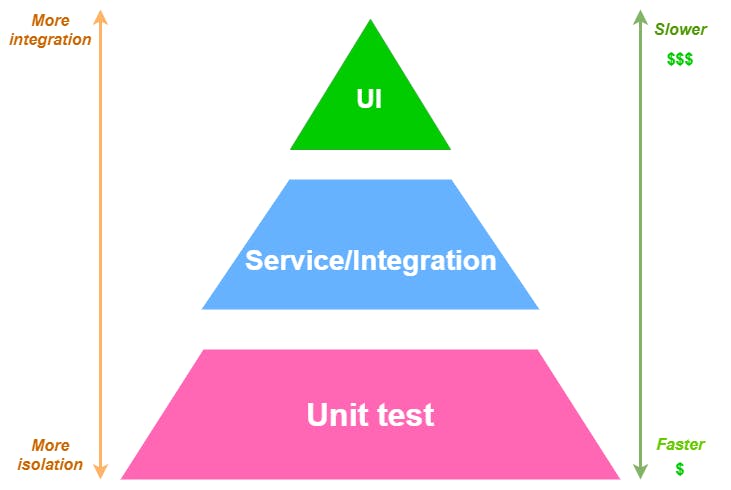What The Testing Pyramid Is And Why You Need To Know About It
A practical approach for Testing software applications
Software testing is a crucial step in the creation of software. It involves a number of procedures that are carried out to evaluate and assess the calibre of software programmes. Prior to launch, testing entails running programmes or procedures to look for flaws, faults, or problems in software. You may keep a balance between various sorts of tests for your applications by using a code-testing pyramid, often known as the test pyramid. The testing pyramid will be thoroughly explained in this post, along with how it can assist your organisation to adopt better testing procedures.
Introduction
The testing pyramid is a well-liked framework for considering the many kinds of tests that have to be applied while testing software programmes. Starting with a modest number of high-level tests and adding more lower-level tests as necessary is the concept. By doing this, you can make sure that your test suite is thorough without being overly extensive.
What is the Testing Pyramid?
The testing pyramid illustrates how testing should be prioritised throughout the software development lifecycle. You may maintain a balance between various testing for your applications using this pyramid. Unit tests should be at the base of the pyramid, while exploratory/functional testing should be at the top. Automated functional, UI, and acceptance testing should be present at the second level, in the middle. Regression tests, code coverage tests, security tests, load/performance tests, compatibility tests, and other test types can also be incorporated into the pyramid.
Why is the Testing Pyramid Important?
The pyramid is significant because it aids software development teams in maintaining a balanced strategy for testing. Software testers can better realise that not all tests are created equal thanks to the pyramid. Functional/acceptance testing shouldn't be the main focus of software testing, according to one of the testing pyramid's main tenets. The testing pyramid's main objective is to make it clear to you that functional testing shouldn't take up the majority of your time. Unit testing and automated functional testing should take priority.
Organising your test
The testing pyramid can be implemented in a variety of methods, but one popular method is to start with unit tests, then include integration tests, and lastly end-to-end (E2E) tests. It makes perfect sense to begin with unit tests because they are the quickest and simplest to write. Although writing integration tests takes a little longer, it's still rather quick and simple. E2E tests should be added last because they take the longest and are the most challenging to write.

Of course, there isn't just one ideal setup for your test suite. The key is to consider the many test types you require before selecting the structure that makes the most sense for your project.
Different Test Types in a Software Testing Pyramid
Unit Tests
Unit tests are used to evaluate a specific capability of an application or a component. At the most fundamental level of the application, this kind of testing is carried out. Unit tests are used to test a specific method or section of functionality in a short piece of code. For instance, the code for adding numbers should be checked at the unit level if we have a calculator application. The functionality of source code created in programming languages like Java, C++,.Net, etc. is tested using unit tests.
Integration Tests
Once unit tests have been completed, the next step is integration testing. They perform tests to see how well the parts function together. Writing integration tests is more challenging than writing unit tests, but both are necessary.
Functional/Acceptance Tests
The purpose of functional testing is to verify that a programme performs as expected when used by an end user. Testers who aren't familiar with the programme perform these checks. With the use of functional tests, we can ensure that the software works as intended for actual users. The purpose of functional and acceptability testing is to ensure that the application functions as expected in the given context.
End-to-End Tests
End-to-end tests are the highest level of testing. They test the entire application from start to finish. Even though they're the most challenging to create, end-to-end tests are crucial.
Other Types of Tests
Apart from the testing types mentioned above, there are other types of tests like unit testing, functional testing, code coverage, security, load/performance testing, compatibility, etc.
Conclusion
The testing pyramid is a way to think about how to test your application in a good way. It is a great way to see how to balance your testing efforts within the software development lifecycle. But it's important to remember that no testing pyramid is the same and that every project or product is different. So, the pyramid should be used as a guide, not as the only way to do things. One of the best ways to make sure your application and team are high-quality is to use a well-balanced testing pyramid.

